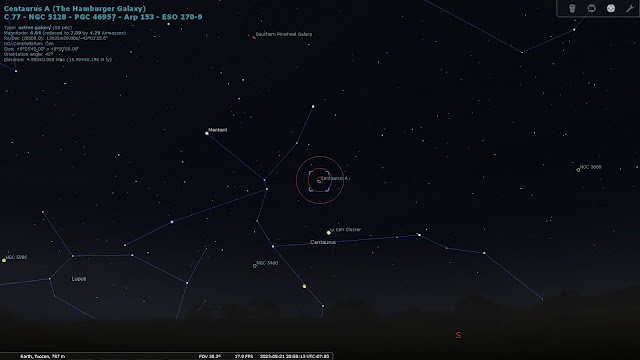 |
| Looking west from Oracle |
One of the persistent struggles has been getting decent pictures of planets. The phone had been doing a serviceable job but exposure settings were often a challenge. When you look at the planets through your scope, you don't see Life Magazine quality color. You see white planets in your view with surface features (except cloudy Venus) shading the whiteness. And planets like Venus or Jupiter can be so bright that your footage for stacking is unusable. Your phone has only so much control with this.
But I always wanted really cool pictures of the planets. I found a ASI120MC which is a dedicated planetary camera. Its USB interface connects to your laptop and the software controls the footage on a much more granular level. Once again, life and weather were hindrances but I finally managed to get Mars a few weeks after opposition and Jupiter before it went too far west:
 |
| You can see Jupiter's elusive red spot along with 3 moons |
 |
| Mars is a much smaller target than I anticipated. |
At this writing, Saturn is just breaking east at dawn and Jupiter is behind the sun. I'm looking forward to getting better shots with this new camera.
*************************
Around the web, there are "challenge" sites with lists of objects to find. A particular one is based on the old "Outer Limits" TV show from the 60s. During the end credits, pictures of 8 different DSOs were shown. The website I found (https://astronomy.com/magazine/2019/06/the-outer-limits-universe) lists those objects so guys like me can track them down. I've got a pretty good start on some of them. NGC 5128 might be too difficult, as it is very far south. But I'll check with Stellarium before writing it off.
Some better tracking with the clock drive also allowed for some pictures with longer exposures:
 |
| Flame Nebula next to Alnitak in Orion |
 |
| Mizar, the double star system in the Dipper |
 |
| Andromeda Galaxy with its smaller neighbor just to the lower right |
A great thing about this is, even if you've seen an object before, seeing it again is a rush. One day down the road, I may get something with a go-to mount but I enjoy the thrill-of-the-chase element involved with hunting something down followed by the accomplishment of having it in my sight.
Speaking of sight, a new addition to the gear has put star searching for me on its ear. Another trip to the astronomy shop inspired a conversation that led to Telrad finders. Using it in place of the finderscope, it essentially puts a bullseye in your view which gets your target zeroed in. There are charts available that have Telrad targets on them:
 |
| Telrad chart targeting the North American Nebula |
I removed the finderscope and Gorilla-Taped the Telrad onto its place. A few days later, I made a second trip to Oracle. It was late March and much colder than last time. Since it was Messier Marathon season, the viewing conditions were optimal. When darkness fell, it was hard to discern constellations - there were that many stars out! I decided my first new target would be the Leo Triplets Galaxies. I centered my bullseye according to the chart and, bingo!
 |
| Leo Triplets, fuzzy but definite shapes near centerview |
I only was able to get one astro-picture during my trip. The camera alignment was jinxed and drive-tracking was bad as well. But I've since used this exclusively and don't see a reason to put the finderscope back on.
 |
| Omega Nebula |
 |
| Sagittarius Star Cloud with a satellite streak. |
I mentioned NGC 5128 in my Outer Limits Challenge. Maybe it isn't as I thought. Stellarium has a Telrad view and a quick screenshot tells me I have a shot at the Hamburger Galaxy in May:
 |
| Bullseye on NGC 5128 |
So I'm feeling pretty good about this hobby. I try to get out once a week if not more and I'm always looking for ways to get my humble scope to be the monster I know it is. Lyra is rising and my next goal is to get a picture of the Ring Nebula. I was able to view it (thanks to Telrad) and even get some high magnification using the 9mm with the 2x Barlow. Saturn and Jupiter will be coming up in the east soon. And a solar eclipse this fall!
 |
| See you on the road |
Comments
Post a Comment